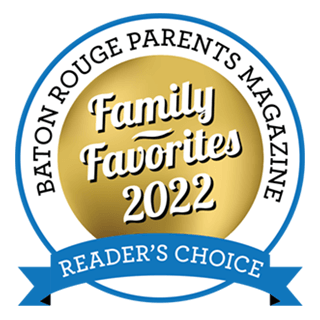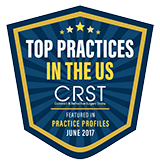It’s always essential to make sure your child can see when they are at school! From blurry vision, difficulty seeing the board, or just struggling to see what’s in front of them, it’s common for children to have problems with their sight as they get older.
Children need to be able to see if they want to succeed in life. If they haven’t been to the eye doctor yet, the first month of a new school year is the perfect time to take them.
During this changing season, it’s critical to make sure your child can see well before they throw themselves into studying and homework. As a parent, you may not know the signs that your child needs glasses.
Keep reading to learn more about these signs and to support your child this school year!
Children’s Eyes are Still Growing and Developing
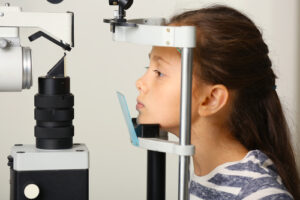
As they get older, children rapidly grow, both physically and mentally. Some may shoot up and have growth spurts, but their eyes are also still developing during this time. It’s crucial to bring your children in for annual eye exams to check that their vision is where it should be for their age group.
It’s common for your child to come in for their annual eye exam and find out that they need glasses for the first time. If they’ve been squinting, holding reading materials closer, or struggling to see, getting their first pair of glasses is a natural next step to help them see better.
Vision Impacts Their Ability to Be Successful

Students can’t do well in school if they find it difficult to read and write. It becomes much more challenging if your child fights to read the words in front of them because they can’t see them.
If you want your child to have the best learning experience possible, they need to see what they are learning. Children that can’t see due to refractive errors often struggle more in school. These include nearsightedness, farsightedness, and astigmatism.
They may lose their place more while reading or find it harder to read the board during class. Children who struggle to see may also lack self-confidence or feel stupid and don’t deserve friends.
The easiest way to avoid this cycle is to take your child for an eye exam when a new school year is just beginning. If there is an issue with how they are seeing, the team at Williamson Eye Center will work with you to help your child.
It’s better to take care of any issues with your child’s vision as soon as you can to avoid affecting their self-confidence or performance in school.
Sight Affects Your Child’s Behavior
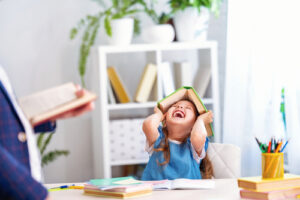
Sometimes, a child’s issues with their sight may be incorrectly diagnosed as a condition like attention deficit disorder. It’s challenging to pay attention in class when a child cannot see the world around them.
Nearly 80 percent of learning occurs because of the things that we see. For children with vision problems, it takes longer to read or identify letters. Children who need glasses may be misdiagnosed with learning disabilities.
Some children act out because of their frustration with their inability to see clearly. Without regular eye exams, you may never know that they’re struggling because of a refractive error or another condition.
What to Expect During Your Child’s Eye Exam
It’s recommended that children start getting eye exams in infancy, around six months old, to test for refractive errors, as well as the ability to move their eyes and their eye alignment. Once your child can attend school, they should have an eye exam before the next school year.
During this eye exam, your child’s eye doctor will test their visual perception. They will ask your child to identify age-appropriate graphics like an apple or a house.
They may also ask them to read something and repeat it several minutes later to test their memory. To track your child’s eye movements, their eye doctor will ask them to watch a pen or digital object move.
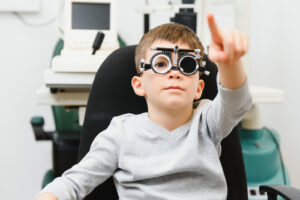
They’ll also assess whether the eyes move together. This is a factor called eye teaming, and it can affect how children see depth and distances.
Your child will have to identify objects at varying distances to help their eye doctor establish how their eyes are focusing. They should be able to see up close and far away. Without this ability, your child may struggle to look from the whiteboard in class to their notebook.
The ophthalmologist will also look for hand-eye coordination. It might involve drawing a picture or doing a physical activity like tossing a ball to test this.
Hand-eye coordination is an indicator of the brain-eye connection. Those who struggle with this function may take longer to learn to draw or write.
How to Know Your Child Might Need Glasses
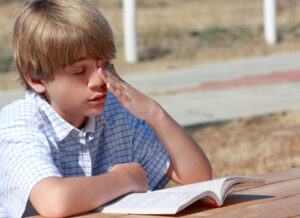
Parents and guardians should watch for indications that their child may have vision issues. Squinting is often a sign of farsightedness. Slightly closing the eyes reduces the focus area, making it easier for nearsighted people to see.
Some children will cover one eye when they’re trying to read or see something in the distance. This adjustment could indicate the child has astigmatism.
Astigmatism occurs when the eye isn’t round like a basketball, but instead, it’s closer to the shape of a football. If a child has astigmatism, it causes blurry vision.
Astigmatism is easily treated by wearing glasses or contacts to alter the way light enters the eye. Children who get headaches or are nauseous while watching TV or reading may be nearsighted or farsighted. They have to work harder to try to focus, which can cause headaches and stomach discomfort.
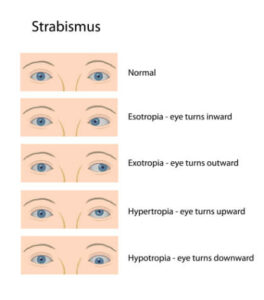
Strabismus
Children who have strabismus may tilt their heads to see better. Strabismus, also known as having crossed eyes, occurs when the eyes aren’t looking in the same direction at the same time.
When children tilt their heads to see better, the change in orientation can help them see if their eye muscles are imbalanced. Glasses or a temporary eye patch may restore muscle balance.
Eye Strain
If you notice your child rubbing their eyes a lot, this can be a sign of eye strain. Eye strain can happen if your child spends too much time looking at digital devices and screens.
Children that rub their eyes a lot may also have pink eye (conjunctivitis), which can be either viral or bacterial that causes the eyes to be red and itchy. See your child’s eye doctor right away if you think they may have pink eye, as the viral form is highly contagious.
Amblyopia
Have you noticed that your child’s eyes don’t look in the same direction? They may have a condition called amblyopia. With amblyopia, it’s best to treat it before five years old, as it can help reverse it. Early diagnosis is also essential for preventing developmental delays that can occur if it’s left untreated.
If you’re concerned that your child may need glasses, the sooner you can schedule an eye exam, the better! It’s a breeze to schedule one at Williamson Eye Center. With six convenient locations, including one in Baton Rouge, it’s never been easier to help your child see clearly and succeed in school!


